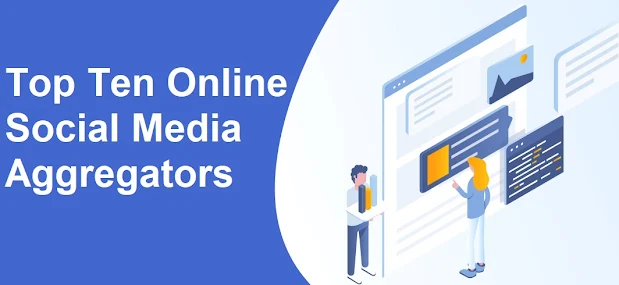Benefits of using social media aggregators Social media aggregators are essential tools that help individuals and companies simplify their social media management. These tools allow you to manage multiple social media accounts from one dashboard, saving you time and effort. Here are some of the benefits of using social media aggregators:
Saves Time: Managing social media accounts can be time-consuming, especially when you have multiple accounts to manage. Social media aggregators save time by allowing you to manage all your accounts from one dashboard. You can schedule posts like event wall, monitor your accounts, and respond to messages all in one place.
Provides Valuable Insights: Social media aggregators provide valuable insights into your social media performance. You can track engagement rates, follower growth, and other metrics to measure the success of your social media widget strategy like . These insights can help you make data-driven decisions to improve your social media presence.
Increases Efficiency: Social media aggregators increase efficiency by streamlining your social media management. You can easily schedule posts, monitor your accounts, and respond to messages all from one dashboard. This saves you time and effort while improving your overall social media strategy.
Top ten social media aggregators
Onstipe
Onstipe is one of the most popular social media aggregators available. It allows you to manage multiple social media accounts from one dashboard, including Facebook, Instagram, Twitter, LinkedIn, and YouTube. Onstipe offers a variety of features, including scheduling posts, monitoring your accounts, and analyzing your social media performance.
TweetDeck
TweetDeck is a social media aggregator that is specifically designed for Twitter. It allows you to manage multiple Twitter accounts from one dashboard. TweetDeck offers features such as scheduling tweets, monitoring your accounts, and creating custom feeds.TweetDeck is a free tool that is available to all Twitter users.
Feedly
Feedly is a social media aggregator that allows you to curate content from various sources, including blogs, news sites, and social media accounts. You can organize your content into categories and share it on your social media accounts.
SocialPilot
SocialPilot is a social media aggregator that allows you to manage multiple social media accounts from one dashboard, including Facebook Widget, Twitter, LinkedIn, Instagram, and Pinterest. youtube widget SocialPilot offers features such as scheduling posts, monitoring your accounts, and analyzing your social media performance.
BuzzSumo
BuzzSumo is a social media aggregator that allows you to track content performance and monitor your social media accounts. You can analyze your content and track your competitors' performance. BuzzSumo also offers a content discovery feature that allows you to find content related to your industry.
Agora Pulse
AgoraPulse is a social media aggregator that allows you to manage multiple social media accounts from one dashboard, including Facebook, Twitter, LinkedIn, Instagram, and YouTube. AgoraPulse offers features such as scheduling posts, monitoring your accounts, and analyzing your social media performance.
Sprout Social
Sprout Social is a social media aggregator that allows you to manage multiple social media accounts from one dashboard, including Facebook, Twitter Widget, LinkedIn Widget, Instagram Widget, and Pinterest. Sprout Social offers features such as scheduling posts, monitoring your accounts, and analyzing your social media performance.
Curator.io
Curator.io is a social media aggregator that allows you to curate content from various sources, including blogs, news sites, and social media accounts. You can organize your content into categories and share it on your social media accounts.
Curator.io offers a free plan that allows you to follow up to 5 sources.
dlvr.it
dlvr.it is a social media aggregator that allows you to automatically share content from your website or blog on your social media accounts. You can also schedule posts and monitor your accounts.
dlvr.it offers a free plan that allows you to manage up to three social media accounts.
Inoreader
Inoreader is a social media aggregator that allows you to curate content from various sources, including blogs, news sites, and social media accounts. You can organize your content into categories and share it on your social media accounts.
Inoreader offers a free plan that allows you to follow up to 150 sources.














